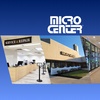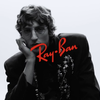{shortcode-56b16193f3f69d04bb552838f8d234fb8752e584}
More than 300 students packed into the Adams House dining hall this Thursday for the 46th annual Adams Drag Night, a variety show with student and professional performers.
Adams hosted their first Drag Ball in 1980 as a show of solidarity with a gay Adams student who had been assaulted by three Kirkland residents outside what is now The Sea Hag Restaurant & Bar. Drag Night has been a cherished tradition ever since, with audience members even dressing up in drag wigs and dresses.
Adams House Faculty Dean Salmaan Keshavjee called Drag Night “a celebration of pluralism.”
“It's amazing to see people from across the house coming together to actually just dance and laugh and have fun,” Keshavjee said in a brief interview at the event. “It's a celebration of people’s right to be who they want to be.”
This year’s Drag Night featured six performances from three professional drag queens, as well as seven from 36 students across six different houses. Adams House Committee co-chairs Grace J. Shambley ’26 and Roxy H. Hreb ’26 opened the night dressed as Sam and John Adams, parodying a medley of songs from “Hamilton.” Other student acts included an enemies-to-lovers romance at the Harvard-Yale Game, a LinkedIn burlesque, and a love ballad sung to a Subway worker.
“I was so surprised to see how full this dining hall was,” Grace M. Liu ’26 said. “This has to be the number one most attended Adams event.”
Liu said that the event created a “comfortable” space for both LGBTQ and non-LGBTQ students to explore their identities.
“It’s just so great to see all these gender norms being bent,” she said. “Being in this space, everyone’s very comfortable being who they are, doing whatever they want.”
This year’s Drag Night is the first since Harvard’s decision to close three diversity offices — including the Office for BGLTQ Student Life. As student interns still search for employment,
Isabela C. Gonzalez-Lawand ’26, a former intern at the Harvard Foundation for Intercultural and Race Relations, called Drag Night “an act of resistance.”
“The importance of creating these spaces, especially during a time where queer and DEI spaces are being attacked is that it opens up a space where young people can celebrate queerness,” she said. “The fact that we get to be here and support our fellow classmates — be in a creative space, but also a space that is very much a movement — I think is super important to the progression of Harvard.”
As students filled Adams Dining Hall, many said they appreciated that the event was free and open to all undergraduates.
“Having a drag show like this on campus and integrated into House life like this is so important,” Addason R. Harris ’26 said. “Drag is such an important vehicle and such an important art for connecting those outside of the queer community with the queer community.”
“It's a low barrier of entry,” Frances S. Campos ’26 said, adding that the low cost for attendees and performers helped cultivate a welcoming atmosphere.
“It’s important to continue practicing queer forms of art but also to make sure that people don't feel intimidated to come into the space,” she said.
Devin A. Guevara ’25-26 also noted the free entry, adding that Drag Night has helped introduce many students to drag as an art form.
“So many people who don’t follow drag at all or don’t go to gay bars come and see drag for the first time here,” he said. “That’s super exciting.”
Terrible Sue, one of the professional drag queens who performed at Drag Night, said that the crowd felt “electric.”
“Especially now in today’s political climate, I feel like going out and doing drag, or even just showing up to a show, can be looked at as a protest,” she said. “What we’re doing here tonight is really important in getting all of the students active.”
—Staff writer Wyeth Renwick can be reached at wyeth.renwick@thecrimson.com. Follow her on X @wzrenwick.
—Staff writer Nirja J. Trivedi can be reached at nirja.trivedi@thecrimson.com. Follow her on X @nirjatriv.













